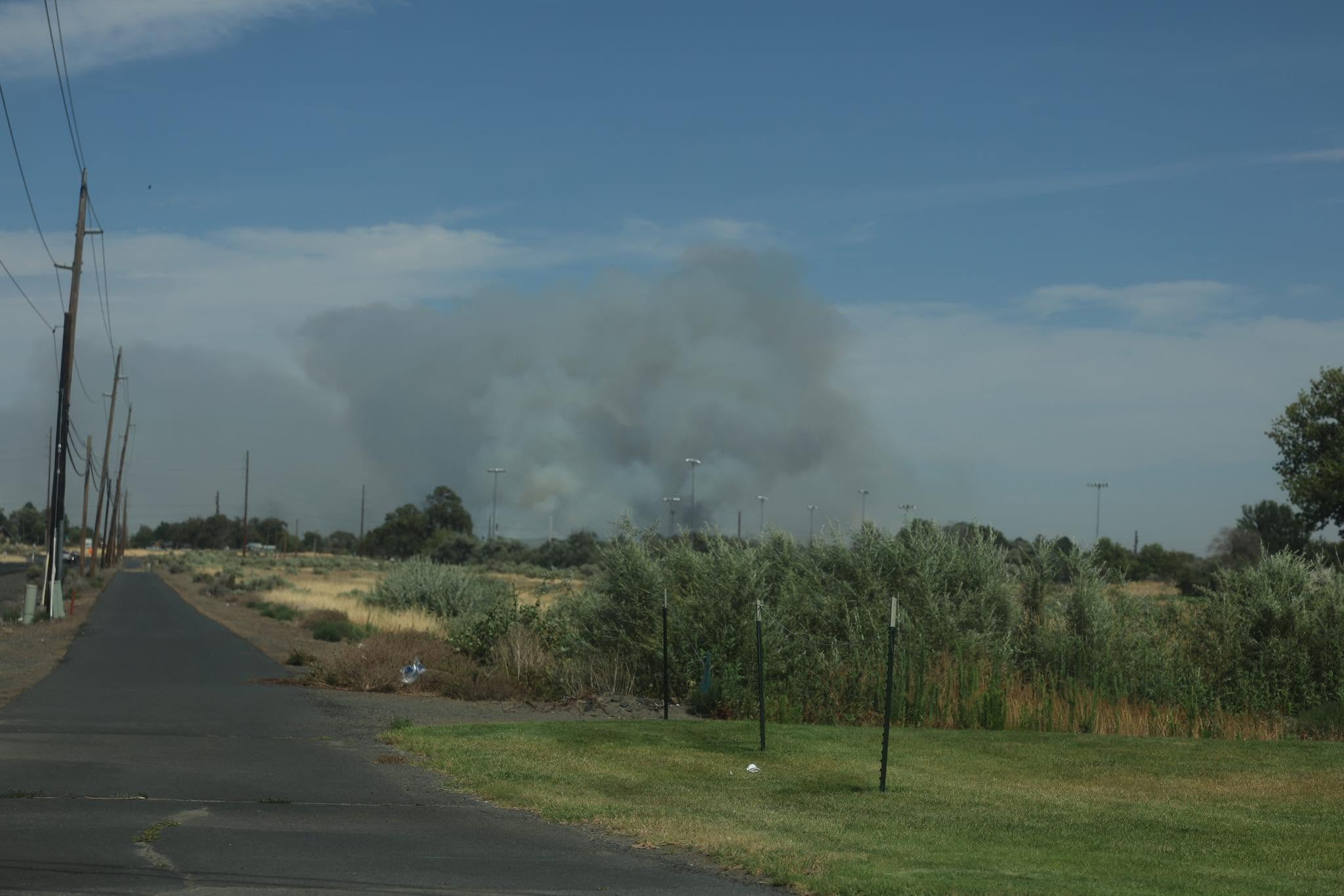Modeling shows Oregon gaining the upper hand on COVID-19
Published 12:00 pm Tuesday, February 2, 2021

- A cloth face mask dangles on a bush alongside Fourth Street in downtown La Grande on Monday, Feb. 1, 2021.
SALEM — New pandemic modeling from the Oregon Health Authority, the Centre for Mathematical Modeling of Infectious Diseases and others indicates COVID-19 is on the decline across Oregon and could continue to taper off into the coming months, returning to levels not seen in months.
The OHA, CMMID, COVID Act Now and the Institute for Health Modeling and Evaluation all place the rate of COVID-19 transmission in Oregon below 1.0 in their most recent models, indicating each new case of the disease on average results in fewer than one subsequent new case. The highest estimated rate of transmission was 0.85 by the IHME, while the lowest was 0.69 by the CMMID.
The Oregon Health Authority’s modeling, published on Thursday, Jan. 28, put the rate of transmission at 0.81. Projections of what could happen if that rate remains constant into the coming weeks found that Oregon could average just 420 new cases of COVID-19 and 13 new hospitalizations each day by Feb. 16.
For context, Oregon has not consistently reported daily new COVID-19 cases at that level since late October 2020, before daily new infections jumped into the thousands in mid-November 2020, leading to the “two-week freeze” and subsequently to the risk and protection framework, under which Umatilla County has been locked in the “extreme risk” category ever since.
The Institute for Health Metrics and Evaluation, which in previous models had projected that Oregon’s COVID-19 death toll would reach 5,011 by April 1, now projects a “most likely” scenario in which the state death toll stands at 2,499 on May 1.
With the state’s death toll at 1,930, the 569 additional projected deaths in the coming three months represent a significant decline in fatalities from recent months. In December 2020, for example, 565 people died from COVID-19 in Oregon, along with 483 in January as of the 30th, according to the Oregon Health Authority.
The institute also projects 30.5% of Oregonians will be immune to COVID-19, either due to vaccination or previous infection, by May 1. That projection assumes that prior infection provides long-lasting immunity, which remains unknown.
Each of the models demonstrate Oregonians are gaining the upper hand in the winter war against COVID-19. The Centre for Mathematical Modeling of Infectious Diseases, for example, put the “halving time” at 7.7 days, meaning if Oregonians manage to keep the rate of infection at current levels, COVID-19 infections will be cut by half roughly every eighth day.
But the models also contain no shortage of reminders that the state of the pandemic — and any projected recovery from the winter surge that may eventually come true — is precarious.
The OHA, for example, projected what could happen if the rate of transmission increases 30%, to 1.1. In that situation, average new daily cases would reach 720 with 24 new hospitalizations per day.
“This scenario is intended to illustrate what would happen over the next month if the (rate of transmission) were to increase slightly above 1 again; this could occur if people were to become less adherent to prevention recommendations and/or if a strain with higher infectivity were to circulate more widely,” the OHA stated in its modeling report.
The IHME’s “worst case scenario” — in which it modeled what could happen if mask use remains steady, new COVID-19 variants prove somewhat resistant to vaccines and spread rapidly and people begin going out at pre-pandemic levels — projected 3,000 cumulative COVID-19 deaths, or roughly double the additional deaths over the next three months compared to its “most likely” scenario.
And, in fact, the COVID-19 variants from the United Kingdom and South Africa (officially B.1.1.7 and B.1.351, respectively) are featured in several models and play an exacerbating factor. The severity of that factor depends on varying assumptions made about their transmissibility and resistance to vaccines.
“We have no evidence that the existing vaccines are less effective against variant strains,” the Center for Human Development, La Grande, said in a statement. “They don’t appear to be causing more serious illness than we already have.”
However, the P.1 variant that emerged in the Brazilian city of Manaus has shown signs it may be able to reinfect those who’ve already experienced COVID-19. The Lancet medical journal estimated 76% of people in Manaus already had been infected by Jan. 27, and yet the city was seeing a sudden spike in cases. The Lancet listed a resistance in the P.1 variant to COVID-19 antibodies as one of four possible explanations for the rise.
The IHME, OHA, CMMID and COVID Act Now models do not make any mention of the P.1 variant from Brazil or the L452R variant from California, the latter of which has been detected in Oregon, according to the OHA.
Even so, health officials have noted the COVID-19 vaccines so far appear to be effective in preventing moderate and severe illness in the variants, and while the projected decline in cases does paint a picture of a brighter future, taking preventive measures to ensure that the rate of spread does not once again increase is critical.
“We have been doing a great job as a community in our response over the last difficult year. We know this has been hard on our community and as difficult as it is to say over and over again we need to do our best to continue to consistently put mitigating practices in place as individuals and a community to slow the spread,” CHD stated. “ Keep your distance, wear a mask, restrict your gatherings, wash your hands frequently, stay home if you’re feeling ill.”









